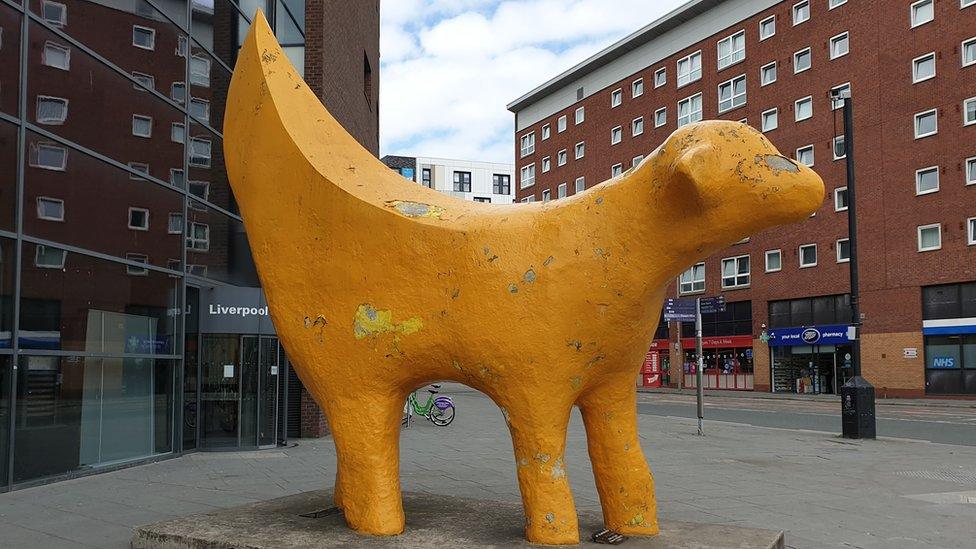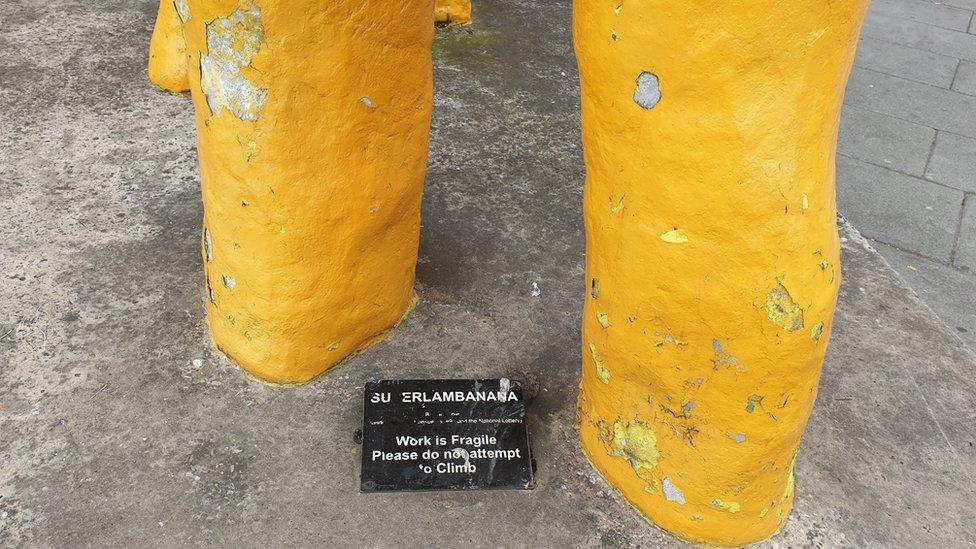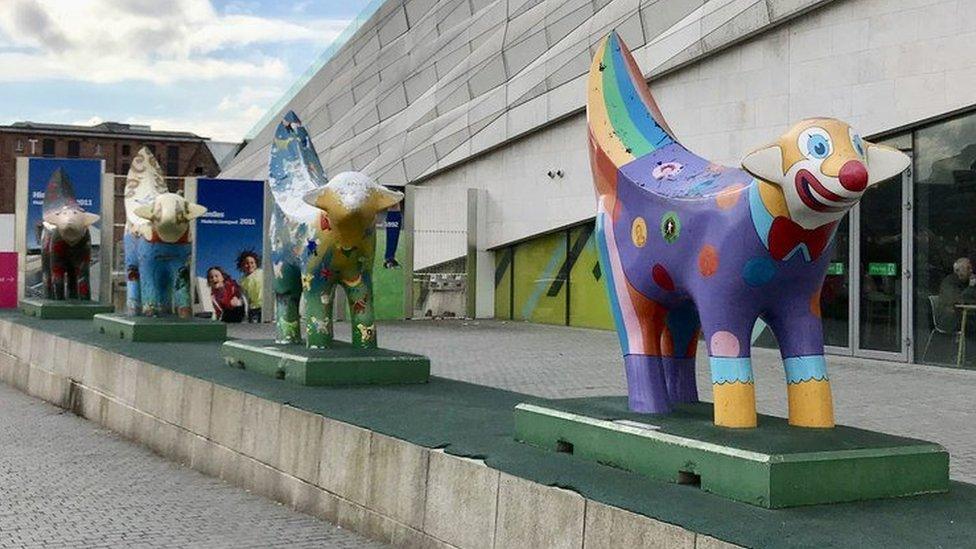Liverpool Super Lambanana: Artist and council in dispute over replacement
- Published

The sculpture was repainted by the council in 2016
A dispute over the future of Liverpool's celebrated Super Lambanana sculpture has broken out between its creator and the city's council.
Liverpool City Council said the bright yellow artwork, which was designed to be temporary, was in a "poor condition" and should be replaced with a replica.
Taro Chiezo, who created the piece in 1998, said as the owner of it, he would like it to be refurbished.
"We have to protect it, not destroy it," he said.
Super Lambanana, which stands on Tithebarn Street, was created as part of a cross-regional art project backed by the Henry Moore Sculpture Trust and Tate Liverpool.
It has become a symbol of the city, but its condition has deteriorated, leaving patchy paintwork and cracks.
Taro Chiezo said it was "very sad about the original sculpture", which he believes could stand for "100 years or more" if it was "fixed perfectly".

The sculpture has fallen into disrepair
He said "in terms of art history", the irreplaceable original was the only one worthy of being marked as part of "the cultural heritage of 1990s England", and added that the new sculpture was not up to the necessary standards.
If a replacement was needed, it should be a "perfect replica in its artistic quality", he said.
He also criticised the council's repainting of the sculpture in 2016, which he said was done without consultation.
A council spokesman said that as the sculpture's owner, the artist has responsibility for its maintenance and in 2009, the authority had handed back all rights to him in an agreement that also permitted it to create a replica, external.
As consent to display the original had now expired, the fact that it remained on display was in breach of their agreement, he added.
Director of Culture Liverpool Claire McColgan said a "more durable replica" had been created "under the strict guidance of the artist".
She added that the council was "currently in negotiation with the artist to remove the original".

Analysis - Prof Michael Parkinson, University of Liverpool

The Super Lambanana just captures what we Scousers are like. It is witty, ironic, playful but also serious.
It captures modernity, because it refers to fears about genetic engineering - but the sheep from New Zealand and the bananas capture our global trading connections.
However, they also remind us of our imperial past - parts of which we can't be proud of.
Although the original one predated the Capital of Culture in 2008, it really took off with the public when over 100 popped up all over the city in that brilliant year, which was crucial to the city's extraordinary recovery.
They symbolised physically the city's psychological and economic renaissance.